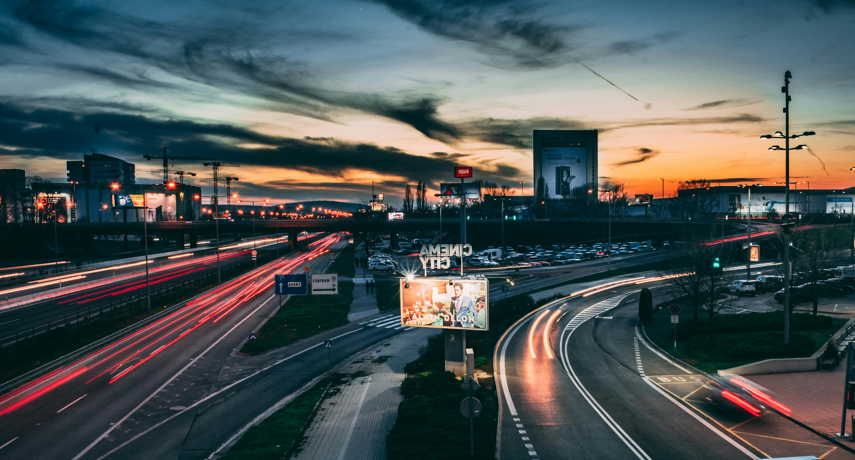When it comes to outdoor advertising, the location of your billboard is just as important as the design of the ad itself. A strategically placed billboard can significantly increase brand visibility, drive traffic, and even boost sales, while a poorly chosen location might not produce the desired results. In this article, we’ll explore the factors you should consider when selecting the perfect billboard location for your business, ensuring your advertising campaign delivers maximum impact.
1. Understand Your Target Audience
The first step in choosing a billboard location is understanding who your target audience is and where they are most likely to be. Are you targeting local customers or a broader regional audience? Are your ideal customers typically driving or walking through specific areas? Knowing your audience’s habits will help you identify areas with high foot or vehicle traffic, increasing the chances that your billboard will be seen by the right people.
- Example: If you’re advertising a restaurant, a billboard near busy office buildings might capture employees looking for lunch options. If you’re advertising a travel agency, a location near an airport or highway might be ideal to attract travelers.
2. Consider High-Traffic Areas
Billboards thrive in high-traffic locations, where they’re seen by large numbers of people on a daily basis. The more eyes on your billboard, the more likely your ad will generate awareness and interest. Some key high-traffic areas to consider include:
- Major highways and interstates: These roads see heavy commuter traffic, especially during rush hours, making them prime spots for billboards.
- Urban areas: Cities often have higher foot traffic and vehicle congestion, making them a great location for billboard advertising.
- Shopping centers and retail districts: If your product or service caters to shoppers, advertising near malls, grocery stores, or entertainment hubs can be effective.
While high-traffic locations typically come with higher costs, the increased visibility can lead to greater returns on investment.
3. Evaluate the Visibility and Readability of the Location
A billboard’s effectiveness is not only determined by how many people pass by, but also by how easily they can see and read it. When evaluating a location, consider the following factors:
- Distance: Billboards located on highways should be visible from a long distance. A well-placed billboard with good visibility will capture the attention of drivers from far away, giving them ample time to read the message before passing.
- Height: Ensure your billboard is placed at an appropriate height so it’s visible from all angles, whether from a car, truck, or pedestrian standpoint.
- Obstructions: Check for potential obstructions such as trees, buildings, or other signs that might block the view of your billboard, reducing its effectiveness.
Choosing a location with clear lines of sight will ensure that your message reaches your target audience in a way that’s easy to digest.
4. Consider the Time of Day and Traffic Flow
The effectiveness of your billboard can also depend on the time of day and traffic patterns. If your billboard is placed along a busy highway, it may get a lot of attention during the morning rush hour, but not as much in the evening. It’s important to consider the typical traffic flow during various hours of the day and how that aligns with your campaign’s objectives.
For instance, if you’re advertising a breakfast spot, targeting commuters during the early morning rush hours might yield better results. If you’re advertising nightlife or weekend events, choosing a location near entertainment districts might be more effective during the evening and weekend hours.
5. Consider Competitors’ Locations
When selecting your billboard location, it’s important to consider where your competitors are advertising. Having your billboard in close proximity to a competitor’s can have both positive and negative effects:
- Positive: Being close to a competitor could place your brand in front of a similar audience, potentially capturing customers who are considering other options.
- Negative: If your billboard is placed too close to a competitor’s, the area could become cluttered, with too many ads competing for attention. In such cases, your message might be lost among the noise.
Ensure that your billboard stands out and is strategically placed in a way that maximizes its visibility, without overwhelming the audience with too many competing messages.
6. Local Regulations and Zoning Laws
Before you finalize a location, make sure that the area is zoned for billboard advertising and that you’re following all local regulations. In many cities, there are laws governing the size, type, and placement of billboards, including restrictions on certain areas like residential neighborhoods, historical sites, or environmentally protected zones.
It’s also important to ensure that your billboard adheres to any safety regulations, such as ensuring that it doesn’t obstruct traffic views or distract drivers. Working with a reputable billboard company can help ensure that all necessary permits and regulations are handled properly.
7. Budget Considerations
The cost of billboard advertising can vary widely depending on location, size, and duration of the campaign. While high-traffic areas can be more expensive, they often offer greater exposure, making them a good choice for large-scale campaigns. On the other hand, less busy locations might be more affordable but may offer a lower return on investment in terms of audience reach.
When choosing a location, balance your budget with the expected effectiveness of the ad placement. If you’re working with a limited budget, consider running a shorter campaign or opting for less expensive locations that still offer high visibility to your target audience.
Conclusion
Choosing the right billboard location is essential for a successful outdoor advertising campaign. By understanding your target audience, evaluating high-traffic areas, considering visibility, and factoring in your budget and competitors, you can select the best location to maximize your ad’s impact. The perfect billboard location will help your business increase brand awareness, drive customer traffic, and ultimately, achieve your advertising goals.
With careful planning and the right strategy, your billboard will become a powerful tool in capturing attention and boosting your brand’s success.


Leave a Reply